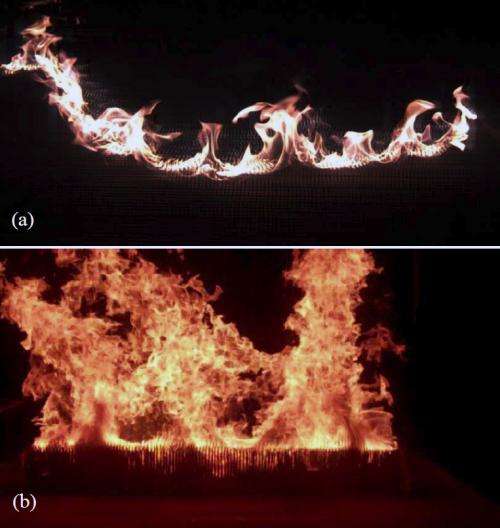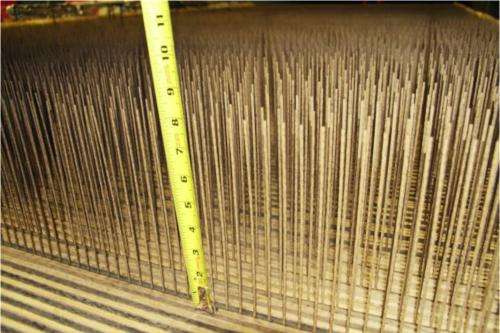How fires spread: UK study brings new insight

University of Kentucky researchers are helping to gain insight into how fire spreads, knowledge that could help forestry officials develop more effective strategies for containing wildfires.
Kozo Saito, director of UK's Institute of Research for Technology Development (IR4TD) and the Tennessee Valley Authority Professor in Mechanical Engineering, led the research effort, in collaboration with the U.S. Department of Agriculture's Missoula Fire Science Laboratory. Working alongside Saito at UK were mechanical engineering Professor Nelson Akafuah and graduate students Brittany Adam and Justin English.
The study suggests that the intensity of heat radiating from forest fires is not sufficient to ignite fine fuel particles, such as pine needles and grasses. Rather it is the intermittent convection of intense heat from the flames themselves that heats these particles to the ignition point.
Researchers also discovered that the ignition of wood depends on a critical rate of converting solid mass to combustible gas, and that ignition depends on heat flux and wind flow. Recent experiments also demonstrate that this critical rate is a function of the moisture content of the fuel.

The team constructed virtual "forests," made up of laser-cut cardboard strips arranged vertically at regular spacings into rows resembling large combs. The strips were created at different lengths and widths and arranged at different row spacings to achieve specific fuel bed properties. The size of the completed fuel beds ranged from 4-8 feet in width and 10-20 feet in length.
These cardboard forests were then burned in the wind tunnel at the Missoula Fire Sciences Laboratory, under varying wind speeds. An array of 64 thermocouple sensors recorded temperatures throughout the fuel bed, taking 500 readings per second as the flames spread. The thermocouples recorded a fluctuating flame presence, creating a temperature that alternated from near-ambient temperature to more than 1,200 deg. C. (2,192 deg. F.) several times per second.
U.S. forestry officials say that, despite the advanced computer models used in fire management, the physical processes responsible for flame spread are poorly understood. This research suggests a completely new approach to understanding and modeling fire spread, and creates new opportunities for developing models that can be used for fire-management applications.
The team's findings were presented at the Seventh International Symposium on Scale Modeling, held Aug. 6-9, in Hirosaki, Japan.
Provided by University of Kentucky


















